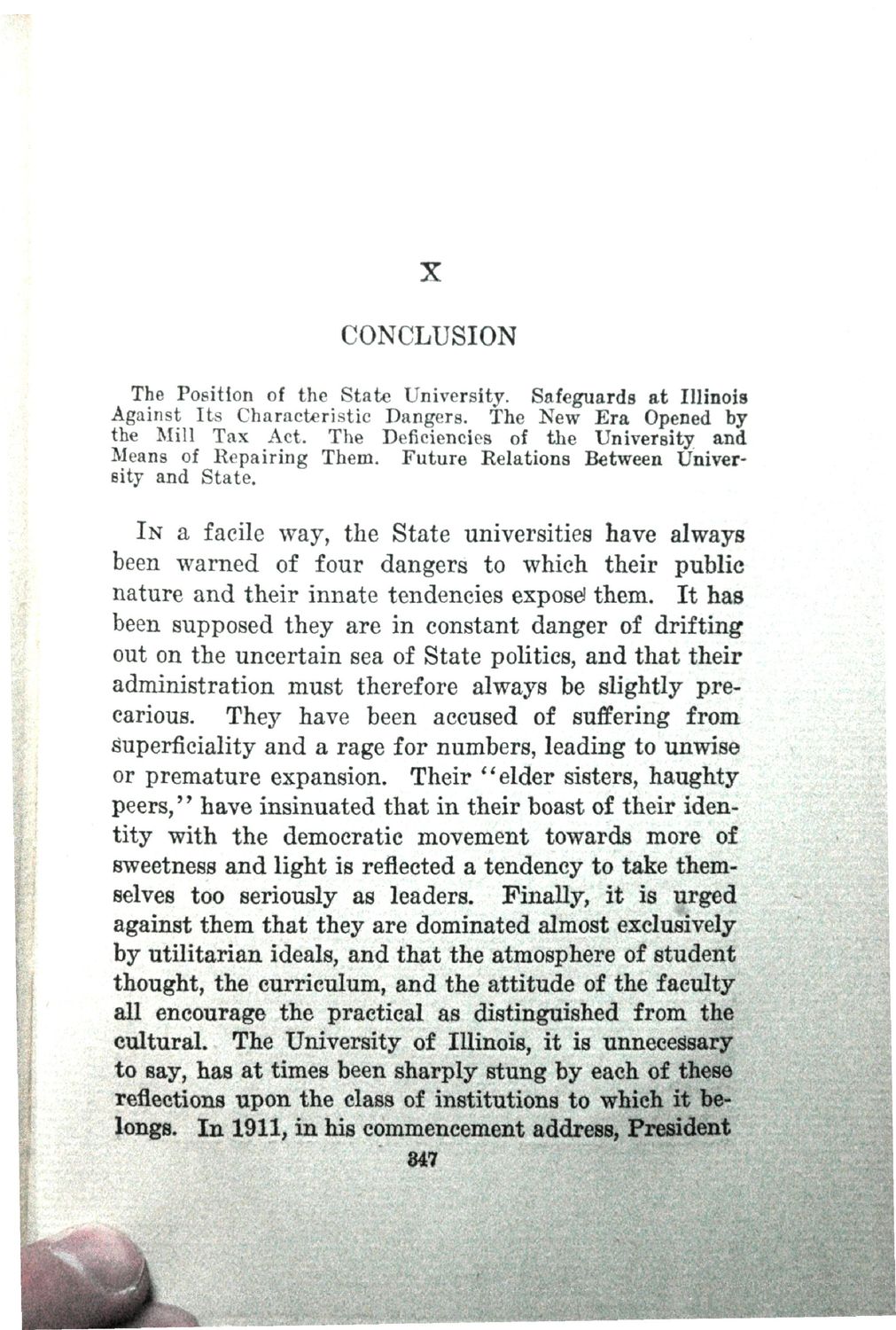| |
| |
Caption: Book - History of the University (Nevins)
This is a reduced-resolution page image for fast online browsing.

EXTRACTED TEXT FROM PAGE:
X CONCLUSION The Position ol the State University. Safeguards at Illinois Against Its Characteristic Dangers. The New Era Opened by the Mill Tax Act. The Deficiencies of the University and Means of Repairing Them. Future Relations Between University and State. IN a facile way, the State universities have always been warned of four dangers to which their public nature and their innate tendencies expose1 them. It has been supposed they are in constant danger of drifting out on the uncertain sea of State politics, and that their administration must therefore always be slightly precarious. They have been accused of suffering from Superficiality and a rage for numbers, leading to unwise or premature expansion. Their "elder sisters, haughty peers," have insinuated that in their boast of their identity with the democratic movement towards more of sweetness and light is reflected a tendency to take themselves too seriously as leaders. Finally, it is urged against them that they are dominated almost exclusively by utilitarian ideals, and that the atmosphere of student thought, the curriculum, and the attitude of the faetij$||| all encourage the practical as distinguished from l^fc| cultural. The University of Illinois, it is unnef08sa^% to say, has at times been sharply stung by each of these reflections upon the class of institutions to which it belongs. In 1911, in his commencement address, President 847
| |